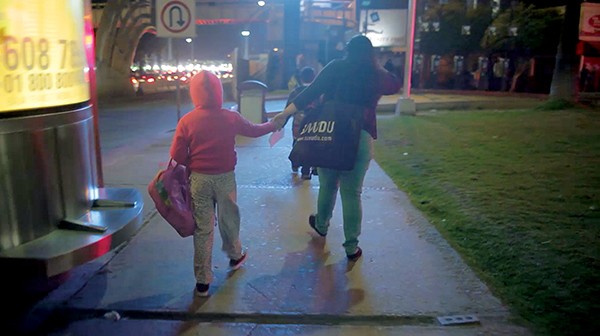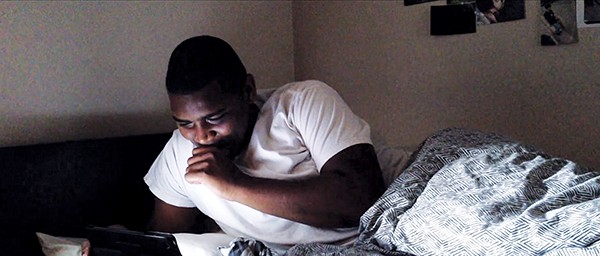One of the best things about Indie Memphis is the festival’s schedule of shorts from local, national, and international filmmakers. This year, the entries range from documentary shorts about young dancers in Memphis (Suzannah Herbert’s “What’s Inside the Cage”) to narrative works about living with an autoimmune disorder (Stacey Ashworth’s “No Breath Play”). Over 70 submissions, all under 25 minutes, will play throughout the week. We picked out a few of our favorites.

“The Department of Signs and Magical Intervention”
“The Department of Signs and Magical Intervention” – Melissa Anderson Sweazy
When Aidan (Sean McBride) gets hit by a fast-moving bus while skateboarding, he finds himself in the afterlife, a realm that — according to Memphis filmmaker Melissa Anderson Sweazy — looks a whole lot like the most boring parts of corporeal existence. Specifically, it looks like a bank. Except instead of dealing in dollars, this ethereal vault and its matter-of-fact employees dole out “signs and magical intervention” to unsuspecting humans.
“The Department of Signs and Magical Intervention,” shot in Downtown Memphis with a cast of familiar local faces, is perhaps this year’s most charming contender: lighthearted, very funny, and smartly framed by Sweazy. The lesson, as Aidan navigates an undead bureaucracy, is that magic, and second chances, just might exist.
“Alphabet” – Ben Siler
“Alphabet,” the latest from Memphis underground filmmaker Ben Siler, opens with a blonde woman wielding an axe in a suburban kitchen. Blood spatters on her shirt as she hacks at someone out-of-frame. You see her digging a hole in her garden and then shoving potato chips into her mouth and examining her nails. Later, she cries to a neighbor, who comforts her unsentimentally.
In two minutes and 37 seconds, we see two murders, an affair, and the long legacy of a secret. It’s funny and brilliant in Siler’s usual muted, dark way. Siler’s dialogue-less, low-definition shorts are as sharply edited as they are pointedly mundane. Despite frequently macabre and over-the-top plots, the filmmaker’s lens is always focused on unremarkable details, such as the glass of seltzer water on the table, or an unplugged power strip in the corner.

“To Cross”
“To Cross” – Suzannah Herbert
This documentary short from the Brooklyn-based and Memphis-born filmmaker Suzannah Herbert follows a high school student named Jared on his daily commute. At 3:30 a.m., Jared wakes up on the Mexican side of Tijuana, early enough that he is able to cross the border and attend high school in America. Twelve arduous hours later, he returns home to Mexico. “At the end of the day, we are really tired,” says Jared, who, we learn, is the only member of his family able to attend school in the U.S. After graduation, he hopes to be able to support his siblings by finding work in the States.
Herbert’s short shines light on the lengths Jared and his peers go to in order to obtain an education, despite the fact that their schooling is considered illegal since the students are not United States residents. “To Cross” gives viewers a sense of its subjects not only as young people, tasked with the care of their families, but as regular high school students. Herbert, who has worked for Martin Scorsese and Michael Moore in addition to making her own films, tells Jared’s story with a light touch and characteristic skill.

“One Hitta Quitta”
“One Hitta Quitta” – Ya’Ke Smith
“One Hitta Quitta” is a genre-bending narrative entry from newcomer Ya’Ke Smith, a Texas-based filmmaker. The film melds real footage of fights, shot on phones and posted online, with the story of a young man whose obsession with watching violent footage leads him to act out. We see Jason (Dariel Embry) challenge his algebra teacher, Mr. Kelly (Shelton Jolivette), while other students in the class surround with phones primed.
Smith shot entirely on mobile devices, which contributes to the film’s fast pace and realistic feel. In the height of the short’s drama, when Mr. Kelly returns Jason’s punch, the frame shifts from horizontal to vertical to horizontal again, referencing the crowd-sourced depictions of similar real events. Smith’s handling is seamless, and makes what might otherwise be a run-of-the-mill story into something new and on point.